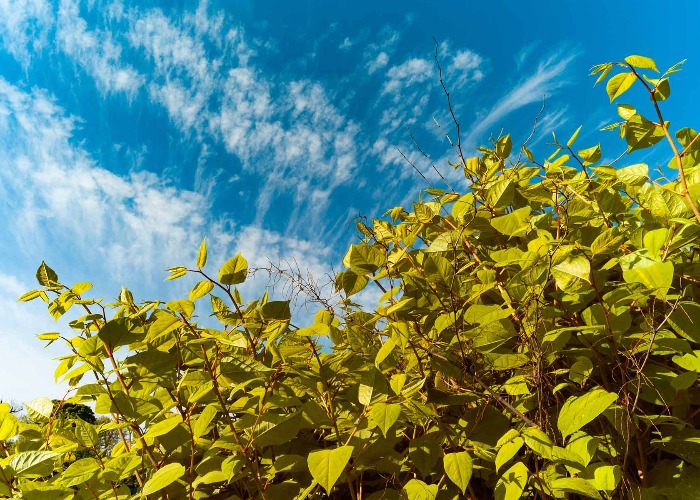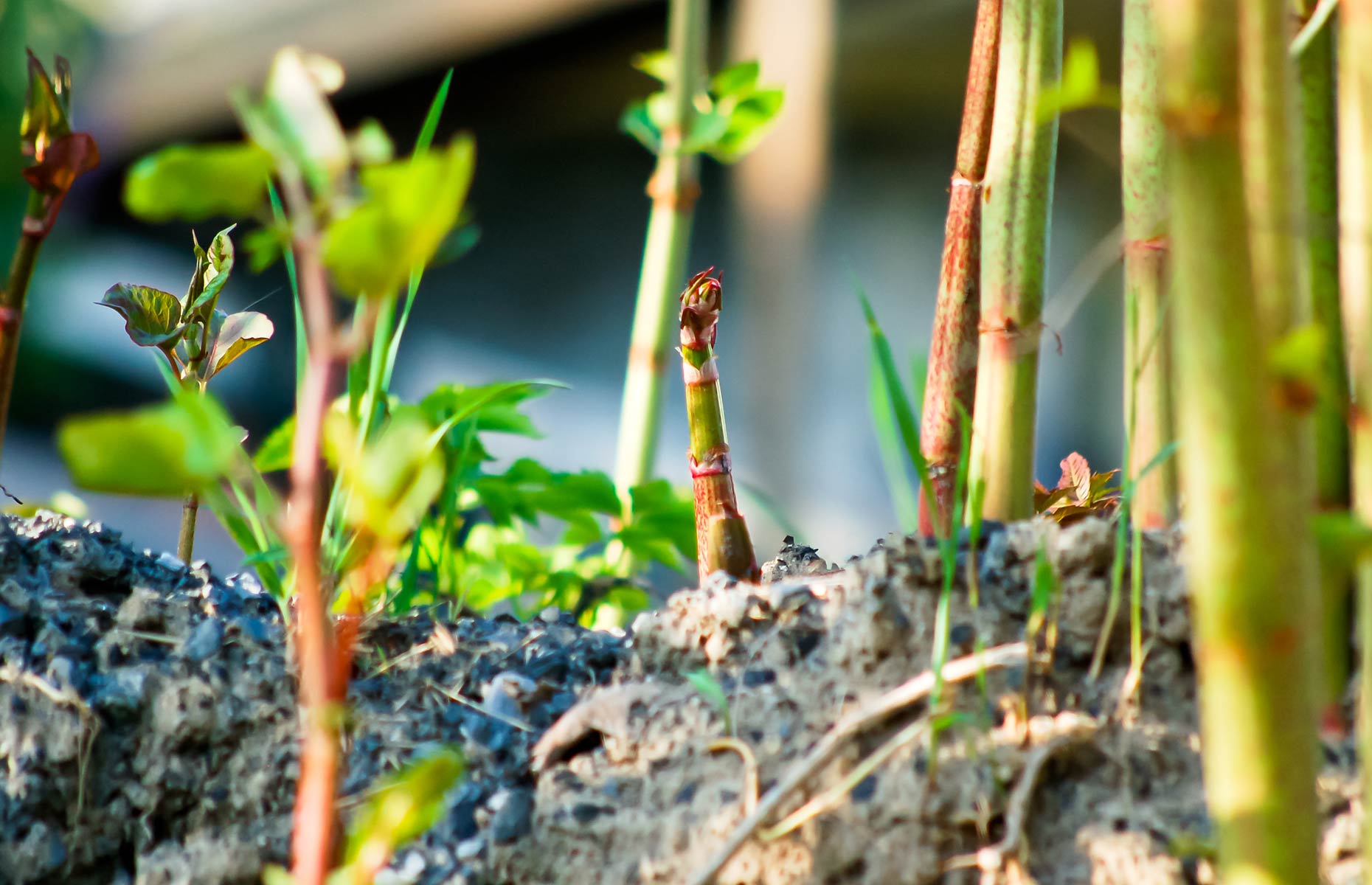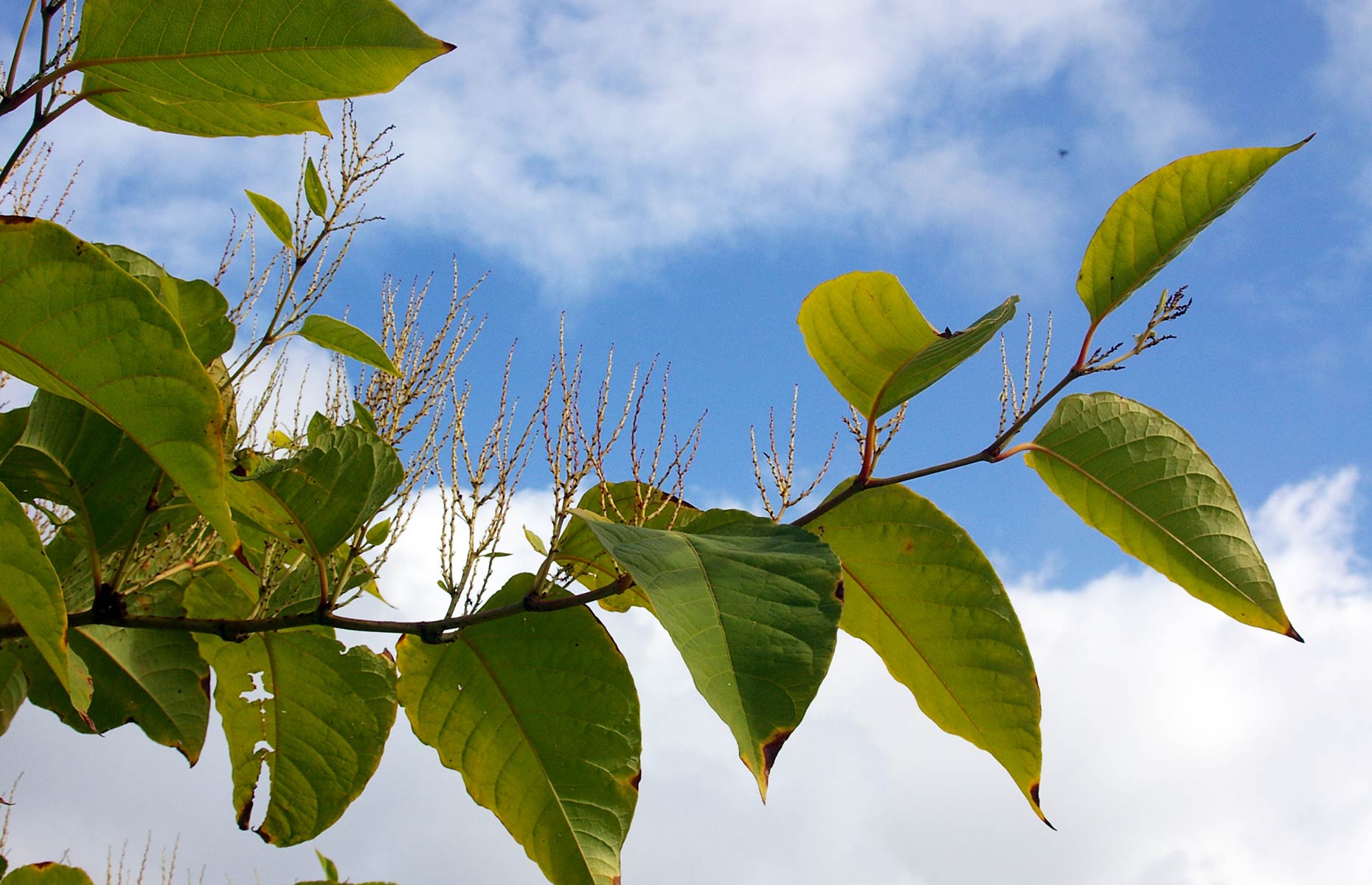UK’s 10 Japanese knotweed hotspots revealed

Check to see if your area ranks among the worst-affected locations with this useful map
As sunnier skies and warmer weather arrive, many of us will be relishing long, lazy days in our gardens. But there’s one pervasive problem homeowners need to be aware of in their outdoor spaces, and that's Japanese knotweed.
READ MORE: Japanese knotweed: removal, identification and treatment
More than just a garden pest, the notoriously invasive plant starts to grow in March or April, depending on the local ground temperature, and if left unchecked could reach a height of three metres by mid-summer.
The first signs of the pesky plant are often purple or red asparagus-like shoots, which typically emerge from the ground in the spring months and can quickly grow into green shrubs with heart or shovel-shaped leaves and pink-flecked stems.
But some UK regions seem to be more affected by the plant than others. Using data from its online heatmap, specialist knotweed removal firm Environet has worked out the locations where homeowners and buyers need to be most alert this year.
 Tell-tale red shoots in spring can be the first sign of a knotweed infestation
Tell-tale red shoots in spring can be the first sign of a knotweed infestation
Bolton, Bristol and St Helens top the list of areas that are currently most affected by Japanese knotweed in the UK.
2022 UK Japanese knotweed hotspots
| Position | Location |
Infestations within |
| 1 | Bolton, Greater Manchester | 684 |
| 2 | Bristol | 475 |
| 3 | St Helens, Merseyside | 441 |
| 4 | Blackburn, Lancashire | 407 |
| 5 | Capel Garmon, Conwy | 398 |
| 6 | Llanelli, Carmarthenshire | 389 |
| 7 | Cardiff | 361 |
| 8 | Rotherham, South Yorkshire | 306 |
| 9 | Streatham, London | 300 |
| =10 | Nottingham, Nottinghamshire | 225 |
| =10 | Sheffield, South Yorkshire | 225 |
How much knotweed is in your area?
The Exposed interactive tool has been created using data on more than 50,000 known infestations of the weed and can be used by homeowners to both log sightings of Japanese knotweed and find information on local cases.
Nic Seal, founder and MD of Environet, said: “Japanese knotweed tends to strike fear into the hearts of homeowners but as long as they’re aware of its presence and take action to remove it before it causes any serious damage or spreads to a neighbour’s property, there’s no reason to panic.
“Anyone living near or moving to one of these hotspots would be wise to check their garden carefully, enter their postcode into the Exposed heatmap to find out how many known occurrences are nearby and if in doubt, seek expert help.”
There is no legal responsibility to report the presence of knotweed on your property. However, when selling a house, there is a legal onus on sellers and estate agents to disclose whether or not a property has Japanese knotweed during the conveyancing process.
 Knotweed is identifiable by its heart-shaped leaves and white flowers
Knotweed is identifiable by its heart-shaped leaves and white flowers
It was previously thought that the presence of the plant could knock up to 15% off the value of a house and even derail mortgage applications if it was present within seven metres of the property boundary.
However, in a recent update to advice for surveyors, The Royal Institute of Chartered Surveyors (RICS) has revised this. Criticising the "exaggerated public perception" of the problems knotweed can cause, their report recommended that surveyors take a more lenient approach and only flag the presence of the plant if there's a visible infestation within three metres of a home's boundary.
According to Environet’s research, about 5% of all UK homes are currently affected by knotweed, meaning the plant is present in either a homeowner’s own property or a neighbouring property.
Act quickly
The good news is that Japanese knotweed can be treated and eradicated, but it’s easier and cheaper if you get the ball rolling quickly.
It’s possible to treat the weed yourself – you could wait for it to dry out and burn out – but this is time-consuming and according to the Environment Agency, it can take up to three years of chemical spraying before it becomes fully dormant.
As it is classed as controlled waste, Japanese knotweed must be disposed of at licensed landfill sites, so the easiest route is to hire a specialist contractor who is a registered waste carrier.
The RICS and the Property Care Association (PCA) have put together a register of vetted consultants and contractors. Simply click the map at the top to find a professional in your area.
READ MORE: 12 garden diseases and disorders and how to fight back
Featured image: gabriel12 / Shutterstock
Comments
Be the first to comment
Do you want to comment on this article? You need to be signed in for this feature